Flying to the Moon (5 page)
Read Flying to the Moon Online
Authors: Michael Collins

Of course, it was not only people in factories who wanted to see astronauts, but also a lot of other people around the country. NASA thought it was a good idea for people to know more about our space programs, and so we astronauts were sent out to make speeches and explain what Gemini and Apollo were all about, and to answer questions. That is called public relations. Usually we were sent out for a week at a time, to visit half a dozen cities, making a couple of speeches a day as we went. It was really tiring work. I never guessed that just meeting people and talking to them could be tiring, but it really was. At the end of the first week I tried this, I was ready to go back to test flyingâit was relaxing compared to speech making. And the questions. Over and over again, I got: how do you go potty in space (the same way you do on earth), what will your wife be thinking about while you are in space (I don't know), why did you want to become an astronaut (because I didn't know I would have to make all these speeches).
How Jules Verne thought weightlessness would be. I had to fly to the moon without my dog

Robert Goddard with one of his early rockets
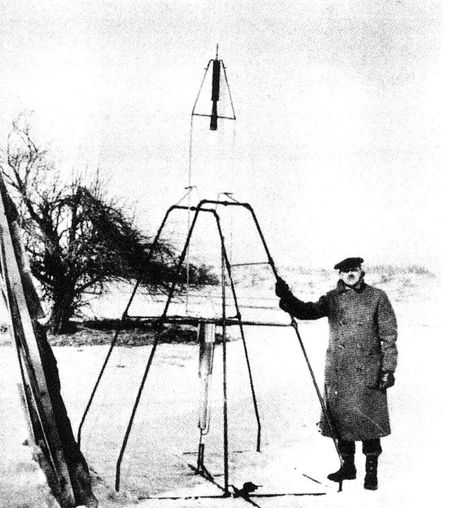
The Lockheed T-33, a two-seat version of the Shooting Star, and the first jet I flew
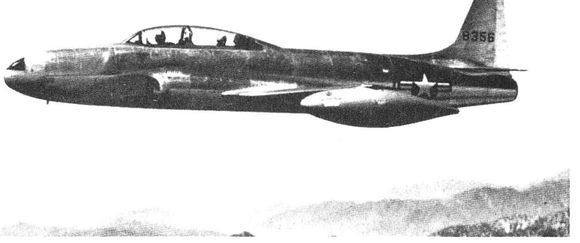
I really liked the looks of the Cee Bee, with its flashy red and white paint job and its lucky dice
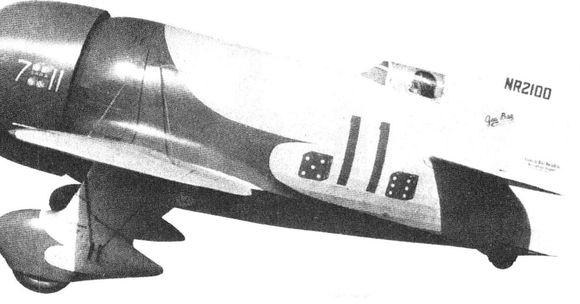
The F-86 Sabrejet, our country's first supersonic fighter, and the most enjoyable airplane I have ever flown

Not much wing, but a big engine. The F-104 Starfighter, first fighter capable of flying at twice the speed of sound
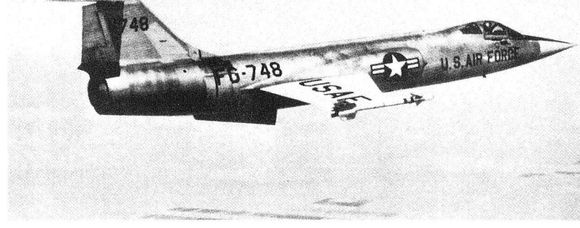
This is the kind of airplane I first flew (when I was eleven)
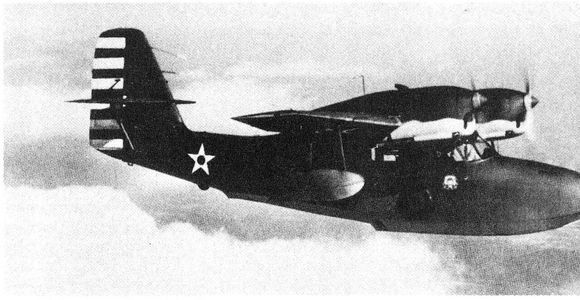
The Supermarine Spitfire of World War II days. One of the most beautiful planes ever built
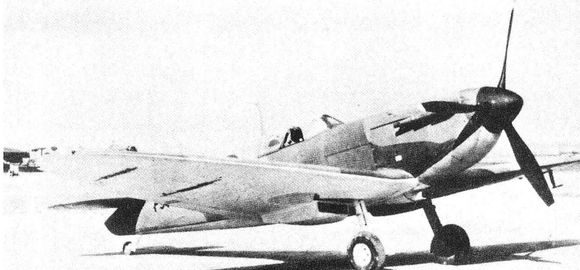
I learned to fly in a plane like this, a North American T-6

The Northrop T-38. We astronauts flew these regularly
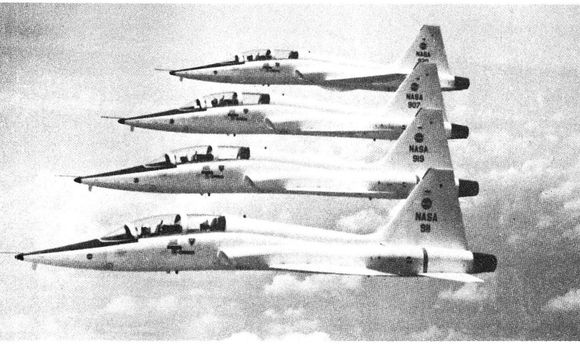
At least there was one good thing about a speech-making trip, just like the other trips we made. That was the T-38 jet trainer we flew. Instead of having to wait until there was an airliner going our way, we could set our own schedules by flying our own planes, and save a lot of time. We could also keep our brains and bodies accustomed to the rolls and turns of flight, although weightless space flight might feel different from flight in the atmosphere. The T-38 is a beautiful airplane; sleek and slim, it looks as if it is going 400 miles an hour when it is parked on the ramp. Its top speed is around 800 miles per hour. It is also a delight to fly. It has powerful hydraulic pistons hooked to rudder, ailerons, and elevator, which means that if you move your hand on the stick or your feet on the rudders ever so slightly, the airplane reacts immediately. For example, it is possible to do a 360° aileron roll in one second. By that I mean that during one second's time, by effortlessly moving your right hand a couple of inches, you can make the sky go from above you to below, to above again, while the earth is going from down to up to down. If you practice a lot, you can learn to make this roll smoothly, so that the nose moves evenly, and stops at exactly the same point it began, with the wings precisely level once again. You can also do loops, but they are not as much fun as rolls, because they take a lot longer. You can also play tag with the cumulus clouds, climbing and diving around and through them. With an airplane like a T-38 you can do things you never dreamed of, high in the quiet sky. During World
War II, there was an American fighter pilot who was killed flying a Spitfire at the age of nineteen. His name was John Gillespie Magee, Jr., and he wrote a poem called “High Flight.” It says, far better than I can, what flying is all about:
War II, there was an American fighter pilot who was killed flying a Spitfire at the age of nineteen. His name was John Gillespie Magee, Jr., and he wrote a poem called “High Flight.” It says, far better than I can, what flying is all about:
Oh, I have slipped the surly bonds of earth
And danced the skies on laughter-silvered wings;
Sunward I've climbed, and joined the tumbling mirth
Of sun-split cloudsâand done a hundred things
You have not dreamed ofâwheeled and soared and swung
High in the sunlit silence. Hov'ring there,
I've chased the shouting wind along, and flung
My eager craft through footless halls of air.
Up, up the long, delirious, burning blue
I've topped the windswept heights with easy grace
Where never lark, or even eagle flew
And, while with silent, lifting mind I've trod
The high untrespassed sanctity of space,
Put out my hand, and touched the face of God.
And danced the skies on laughter-silvered wings;
Sunward I've climbed, and joined the tumbling mirth
Of sun-split cloudsâand done a hundred things
You have not dreamed ofâwheeled and soared and swung
High in the sunlit silence. Hov'ring there,
I've chased the shouting wind along, and flung
My eager craft through footless halls of air.
Up, up the long, delirious, burning blue
I've topped the windswept heights with easy grace
Where never lark, or even eagle flew
And, while with silent, lifting mind I've trod
The high untrespassed sanctity of space,
Put out my hand, and touched the face of God.
Other books
Field of Blood by SEYMOUR, GERALD
The Shadow’s Curse by Amy McCulloch
Weapon of Fear by Chris A. Jackson, Anne L. McMillen-Jackson
Laura's Big Win by Michelle Tschantre'
The Guns of Empire by Django Wexler
Stargazey Point by Shelley Noble
Maid to Submit by Sue Lyndon
Jesse by C. H. Admirand
Knife Edge: Life as a Special Forces Surgeon by Villar, Richard
Legal Action (Surrendering Charlotte Chronicles) by Lee, Kimball
